Posts Tagged: Berkeley
Ever Seen a Plume Moth?
Have you ever seen a plume moth? Or has a plume moth ever seen you? We spotted a pterophorid plume moth (family Pterophoridae) yesterday on our...
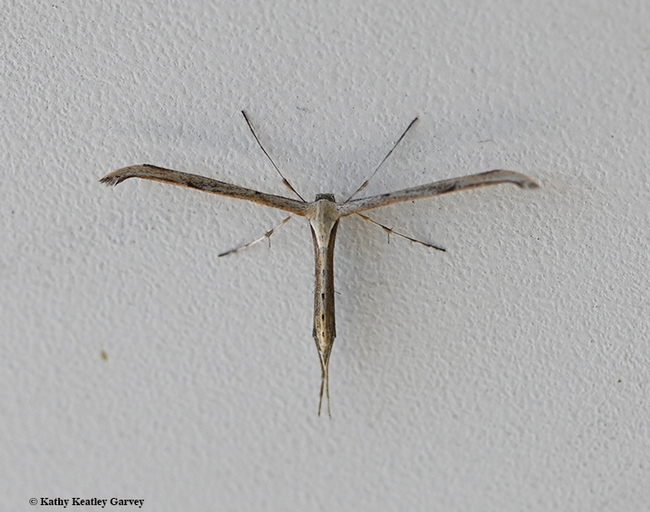
A pterophorid plume moth (family Pterophoridae) in Vacaville, Calif. on April 2, 2020. (Photo by Kathy Keatley Garvey)
Scientists Focusing on Insect Biodiversity and Insect Decline
If you're looking for a thought-provoking discussion on insect biodiversity and decline, mark your calendars. Chemical ecologist and conservation...
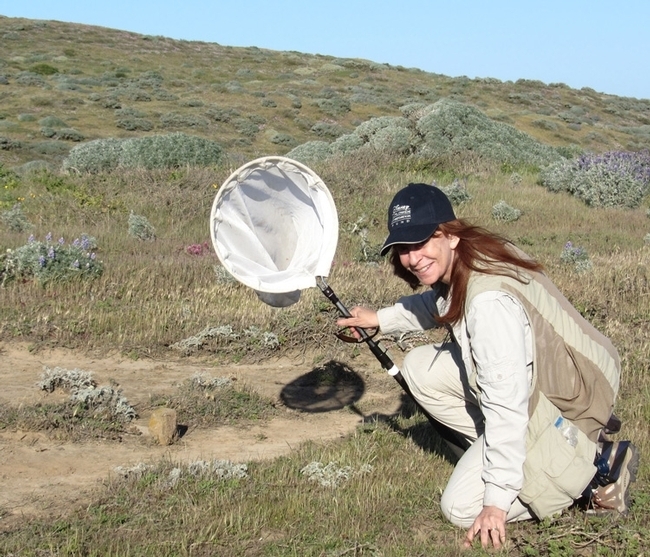
Leslie Saul-Gershenz of UC Davis will speak on "Is Insect Biodiversity, Biomass and Abundance Declining?” at the Hillside Club's Fireside Lecture Series, Berkeley, on March 2.
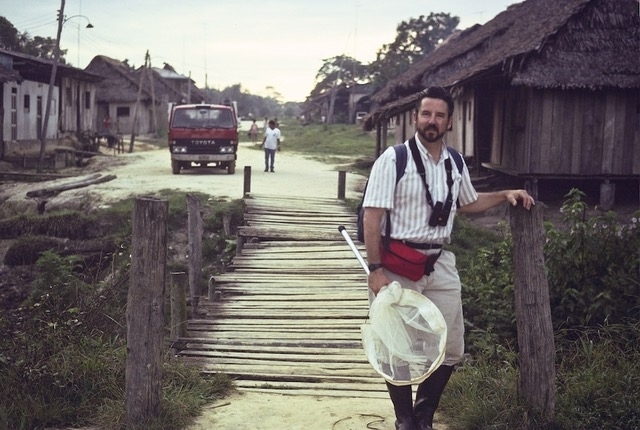
Conservation biologist Norm Gershenz is the CEO of SaveNature.Org.
These Entomologists Are a Powerhouse of a Team
They know their insects. Ask them a question about insects and entomologists, and odds are, they'll come up with the correct answer. And...
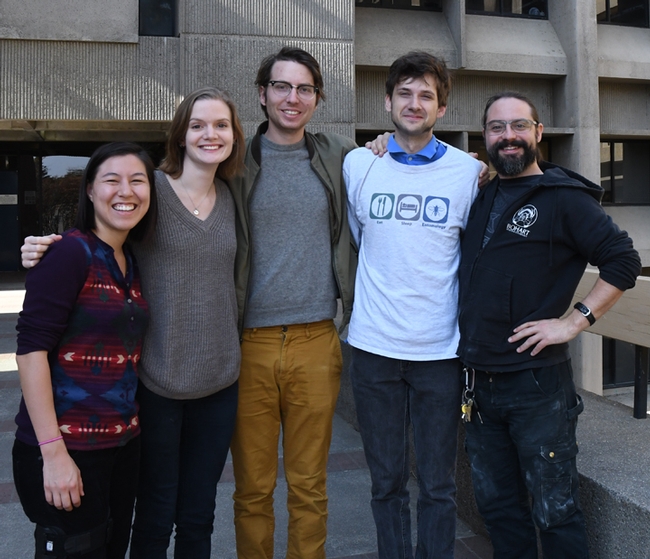
The UC Linnaean Games Team includes (from left) Hanna Kahl, Jill Oberski, Miles Dakin, Zach Griebenow and Brendon Boudinot, all in the doctoral program, UC Davis Department of Entomology and Nematology. Not pictured: captain Ralph Washington Jr., who received his bachelor's degree in entomology at UC Davis and is now a graduate student at UC Berkeley. (Photo by Kathy Keatley Garvey)
Just Being Totally Territorial
What was that! If you grow Mexican sunflowers (Tithonia) in your pollinator garden, you've probably noticed the fast-flying longhorned male bees...
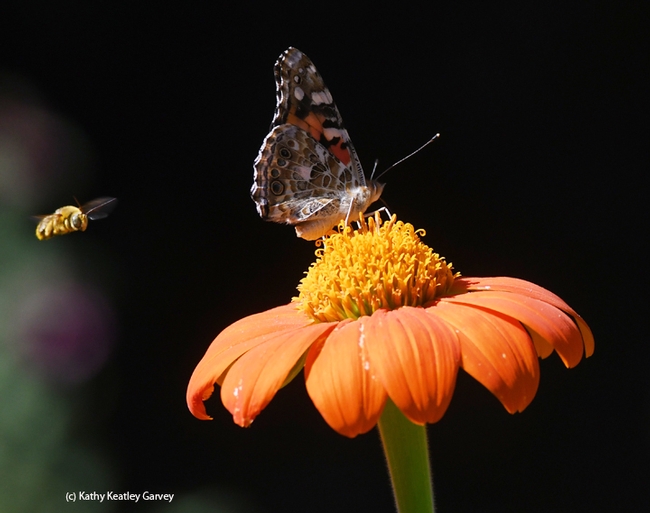
A male longhorned bee, Melissodes agilis, targets the back of a painted lady, Vanessa cardui, on a Mexican sunflower in a Vacaville pollinator garden. This is typical territorial behavior. (Photo by Kathy Keatley Garvey)
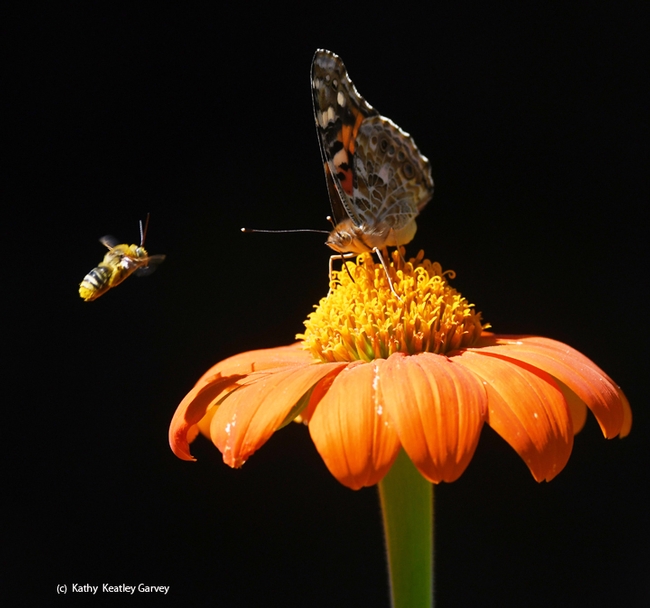
Heads up! A male longhorned bee, Melissodes agilis, heads straight for the painted lady butterfly, Vanessa cardui. (Photo by Kathy Keatley Garvey)
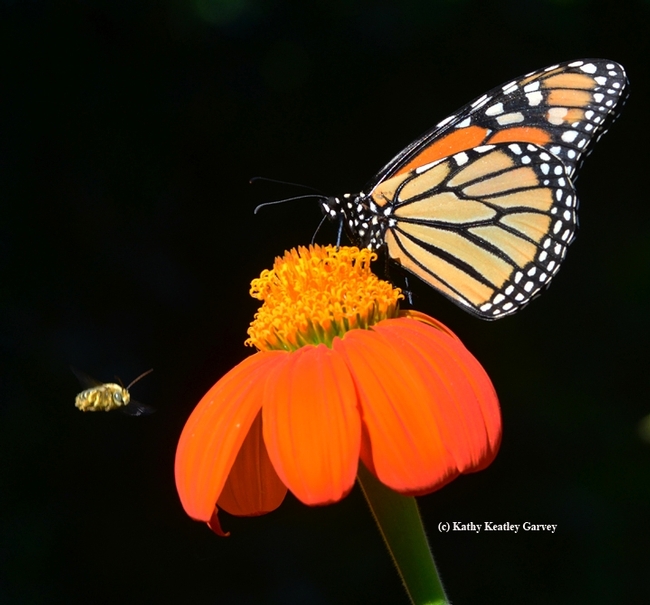
A monarch butterfly is interrupted by a male longhorned bee engaging in territorial behavior. (Photo by Kathy Keatley Garvey)
Pollinator Habitat: Important Part of Solar Energy Study
Solar energy should not only be used to benefit global sustainability, but to protect our global ecological systems, including climate, air quality,...
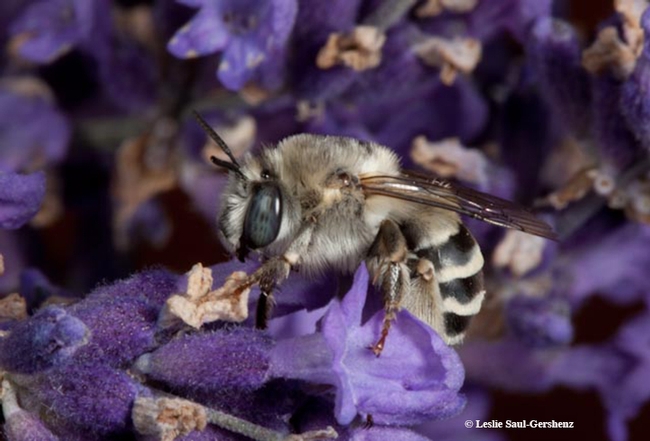
Solar energy can be used to protect pollinator habitat, according to a research paper published July 9 in the journal Nature. This is Anthophora urbana, a ground-nesting solitary bee which has a broad distribution including the Mojave Desert. It is a floral generalist collecting pollen and nectar from many species of plants, says UC Davis entomologist Leslie Saul-Gershenz. (Photo by Leslie Saul-Gershenz)
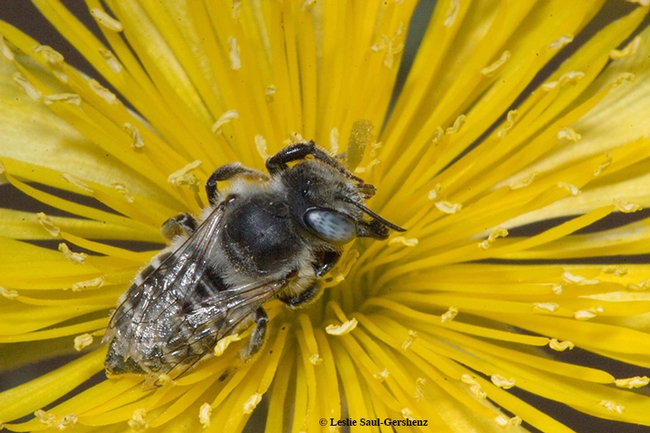
Native bee Megachile sp. on Mentzelia flower in the Mojave Desert. (Photo by Leslie Saul-Gershenz)

